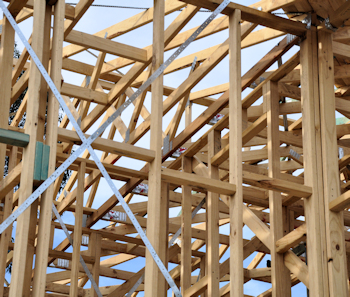Purpose of stress grading

When timber is used in a structure, it needs to have reliable strength properties. The strength of a structural member is what allows it to withstand the stresses that act on it.
These stresses come from things like wind gusts that blow from different directions, people or heavy objects inside, and of course, the weight of the structure itself.
Stress grading is all about taking into account the things that affect the strength of a piece of timber, and then giving it a grade that matches its ability to withstand stresses.
When the grading is done by a person who physically looks for the strength-reducing characteristics, it’s called visual stress grading. When it is done by a machine, it’s called mechanical stress grading. In general, only the structural softwoods tend to be machine graded in Australia – especially radiata pine and the other plantation pines. Structural hardwoods are nearly always graded visually, although occasionally some mills may use a machine to grade particular species.
Difference between stress grading and appearance grading
Stress grading of structural timber is different from the appearance grading of products like flooring or lining board, because the strength-reducing characteristics are treated as ‘defects’ in the piece, rather than as ‘features’ that may look pleasing to the customer.
Having said that, it is also possible to give timber a structural appearance grade, which takes into account both strength and appearance qualities. This is done when structural timber is used as a feature in a building, such as in vaulted ceilings and exposed rafters. We’ll talk more about this in the lesson: Structural grades and stress grades.